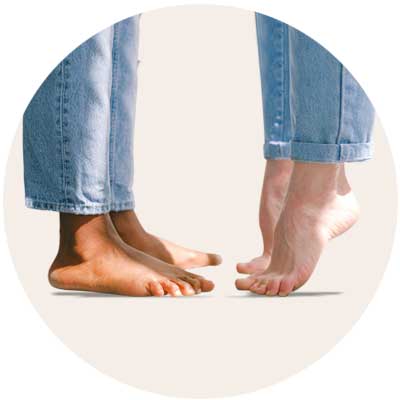
A key cancer treatment today is the blockage of certain cell receptors to inhibit neoplastic cell function. As its name suggests, targeted therapy obstructs specific receptors, unlike chemotherapy, which targets any and all cells. The epidermal growth factor receptor (EGFR) is expressed on the surface of the cells. When bound with extracellular proteins, EGFR stimulates activity of the intracellular protein tyrosine kinase (TK). In turn, this stimulates other cellular activities including migration, adhesion and proliferation. Therefore, blocking the EGFR receptor and/or activating TK also prevents the migration, adhesion and proliferation of cancerous cells and tumors.
DERMATITIS FOLLOWING CHEMOTHERAPY (CHEMO RASH)
Chemotherapy works by blocking cell growth and the synthesis of many proteins, and can cause dermatitis among those undergoing this cancer treatment. During chemotherapy, the skin can no longer produce the fats it needs for protection, causing it to lose moisture and become dry.
REACTIONS TO TARGETED (BIOLOGICAL) THERAPY
Common reactions to targeted therapy include the appearance of inflammatory papules or pustules at hair follicles, especially in areas rich in sebaceous glands such as the face and upper trunk. Reactions can vary, but can be serious, causing plaques, crustiness, pain, and burning.
RADIATION DERMATITIS
Radiation dermatitis, or radiation burn, appears in the targeted area during external beam radiation cancer treatment.
THE EYELIDS, BROW AND TARGETED (BIOLOGICAL) THERAPY
A common reaction to targeted therapy is the appearance of inflammatory papules or pustules at hair follicles, especially in areas rich in sebaceous glands such as on the face and upper trunk. This papulopustular reaction also commonly appears on the eyelids and the brow.
WOUNDS
During cancer treatment, the skin often becomes less elastic, more sensitive and more prone to tears or wounds. Wounds are lesions of the stratum corneum. They are differentiated into superficial wounds (abrasions and grazes) and deeper wounds (e.g. cuts). Bleeding may accompany wounds depending on their severity.
RHAGADES AND FISSURES ON THE FINGERS
Rhagades and fissures are thin, elongated cuts that form on the fingers. They are usually shallow and form on the stratum corneum, but can be deeper.
In recent years, numerous pharmaceuticals have been produced that can block EGFR (epidermal growth factor receptor) proteins or TKs (tyrosine kinases). These treatments have been very successful in counteracting epithelial neoplasms and, as such, have become staples for the treatment of many cancers.
The most widely used, currently marketed pharmaceuticals are: Cetuximab (Erbitux), Panitumumab (Vectibix), Gefitinib (Iressa), Erlotinib (Tarceva), Trastuzumab (Herceptin), Lapatinib (Tyverb).
While producing positive results in cancer treatment, these pharmaceuticals also cause unwanted side effects such as skin reactions. This is because the epidermis is an epithelium that rapidly reproduces and quickly goes into distress when treatments are administered that block EGFR and/or TK. Adverse skin reactions are side effects in virtually all patients undergoing such therapies and some individuals even reach toxicity grades 3 or 4 meaning that treatment must be discontinued. These reactions cannot be prevented or avoided, but can be addressed with specific products to reduce discomfort and suffering so that the patient can conclude the full cancer treatment course.









